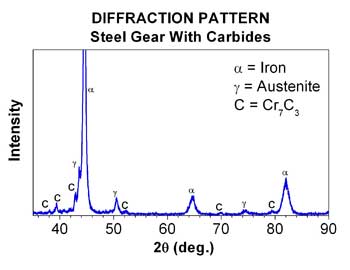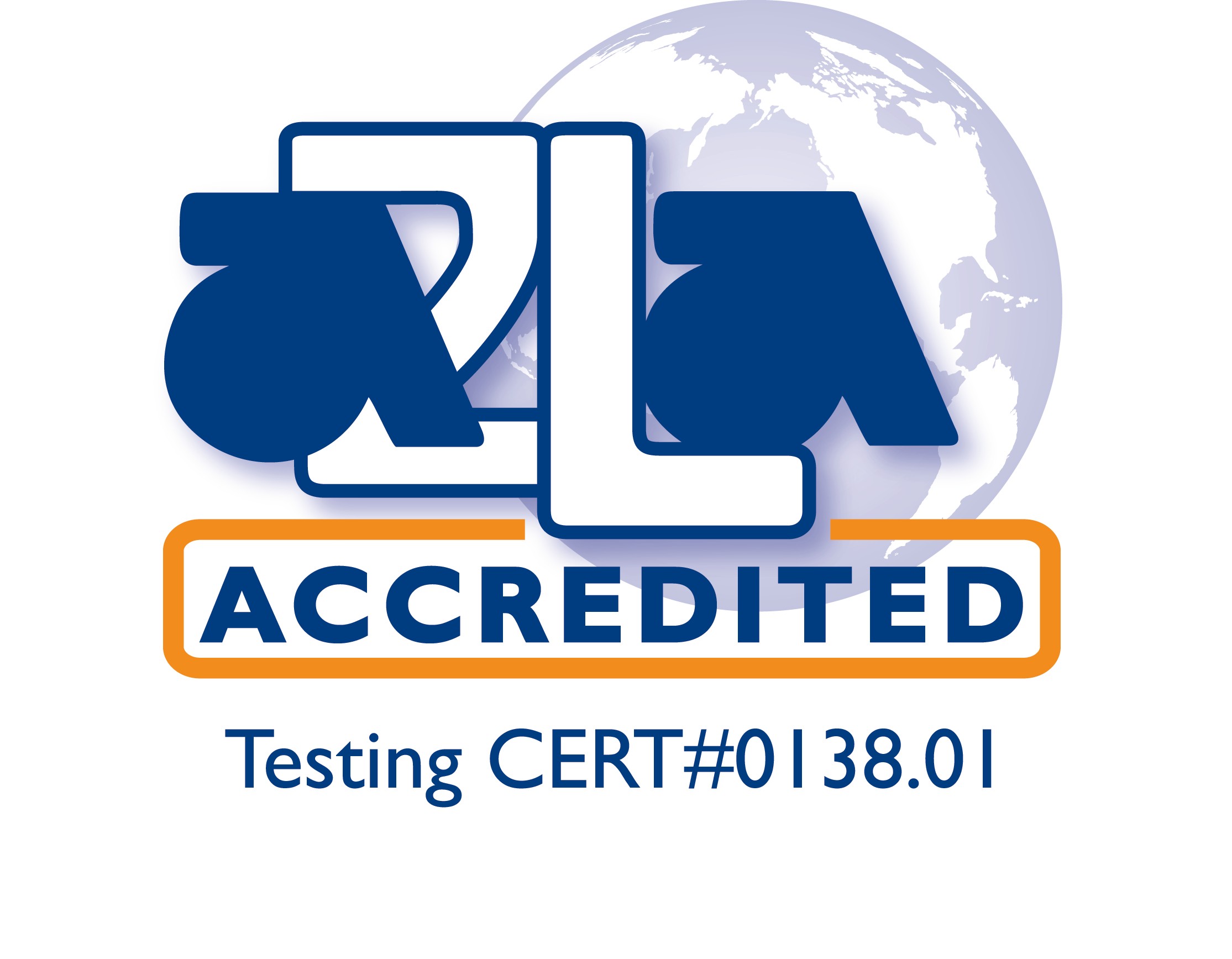Qualitative Phase Analysis
What is X-Ray Diffraction Qualitative Phase Analysis?
Qualitative Phase Analysis provides material information gleaned from an X-ray diffraction (XRD) pattern and a pattern plot of diffracted X-ray intensity vs. Bragg angle. Each phase of a crystalline material will produce a unique diffraction pattern. The diffracted peak positions and intensities from a particular material phase serve as a fingerprint that can be compared to a database of reference patterns to identify a phase or phases of solids, powders, thin films, or suspensions.
While elemental analysis obtained by spectroscopy or wet chemistry can identify the elemental constituents of a component or mixture, XRD provides far more information. The molecular components and crystalline structures are determined, allowing individual components of a mixture, such as an oxide and sulfide, to be identified. From the knowledge of the crystalline structure, the temperatures, pressures, and other aspects of formation can often be deduced.
How is it measured?
Lambda Technologies provides X-ray diffraction qualitative phase analysis using diffractometer techniques. Qualitative phase analysis software has been written for data collection and preprocessing to strip background and detect diffraction peaks using first and second derivative algorithms.
Commercial search/match software is used for searching the full Joint Committee for Powder Diffraction Standards (JCPDS) data file system, including organic, inorganic, mineral, and alloy systems. The characteristic lattice spacings and intensities are used to search through nearly a half-million JCPDS data sets for known phases.
Large and small samples of polycrystalline materials down to fractions of grams can be analyzed using the diffractometer systems.
Features:
- Samples may be tested nondestructively.
- Corrosion products and coatings may be identified in-situ on the surface of substrates using the bulk mounting capability.
- Graphite monochromators provide virtual immunity to fluorescence from the sample for optimum detection limits and precision.
- All diffractometers are calibrated to the NIST mica and silicon standards (SRM 675 and 640) and corrected for angular error using algorithms unique to Lambda Research’s data collection software.
- The data collection and reduction software developed at Lambda can be tailored for specific applications allowing detection of extremely broad peaks and deconvolution of overlapping peaks.
Application Examples:
- Identification of unknown corrosion products or contaminants.
- Verification of raw materials, such as ores, minerals, etc.
- Analysis of cements and concretes.
- Process development for ceramic materials and alloys.



What is X-Ray Diffraction Qualitative Phase Analysis?
Important material information can be gleaned from an X-ray diffraction (XRD) pattern. An XRD pattern is a plot of diffracted X-ray intensity vs. Bragg angle. Each phase of a crystalline material will produce a unique diffraction pattern. The diffracted peak positions and intensities from a particular material phase serve as a fingerprint that can be compared to a database of reference patterns to identify a phase or phases of solids, powders, thin films, or suspensions.
While elemental analysis obtained by spectroscopy or wet chemistry can identify the elemental constituents of a component or mixture, XRD provides far more information. The molecular components and crystalline structures are determined, allowing individual components of a mixture, such as an oxide and sulfide, to be identified. From the knowledge of the crystalline structure, the temperatures, pressures, and other aspects of formation can often be deduced.
How is it measured?
Lambda Technologies provides X-ray diffraction qualitative phase analysis using diffractometer techniques. Qualitative phase analysis software has been written for data collection and preprocessing to strip background and detect diffraction peaks using first and second derivative algorithms.
Commercial search/match software is used for searching the full Joint Committee for Powder Diffraction Standards (JCPDS) data file system, including organic, inorganic, mineral, and alloy systems. The characteristic lattice spacings and intensities are used to search through nearly a half-million JCPDS data sets for known phases.
Large and small samples of polycrystalline materials down to fractions of grams can be analyzed using the diffractometer systems.
Qualitative Phase Analysis Features:
- Samples may be tested nondestructively.
- Corrosion products and coatings may be identified in-situ on the surface of substrates using the bulk mounting capability.
- Graphite monochromators provide virtual immunity to fluorescence from the sample for optimum detection limits and precision.
- All diffractometers are calibrated to the NIST mica and silicon standards (SRM 675 and 640) and corrected for angular error using algorithms unique to Lambda Research’s data collection software.
- The data collection and reduction software developed at Lambda can be tailored for specific applications allowing detection of extremely broad peaks and deconvolution of overlapping peaks.
Application Examples:
- Identification of unknown corrosion products or contaminants.
- Verification of raw materials, such as ores, minerals, etc.
- Analysis of cements and concretes.
- Process development for ceramic materials and alloys.



How are Lambda’s Phase Analysis services superior?
Our custom-built diffractometers are specifically designed for phase analysis to guarantee accurate results. Diffractometers are calibrated to NIST standards, and all testing is done to ASTM and SAE standards where applicable. Lambda’s experience in data collection, phase identification, and analysis provides the ultimate data quality and support to our customers.
Questions about our testing parameters or techniques?

